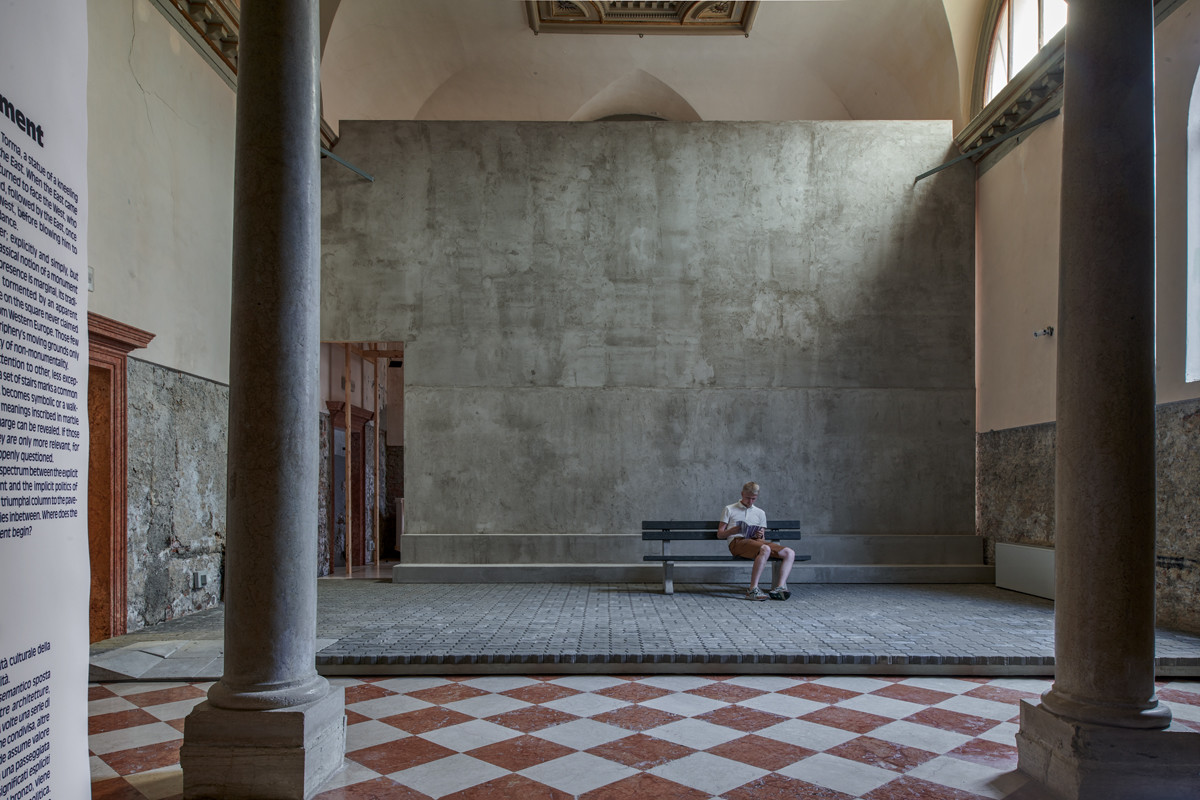The Estonian exhibition, the “Weak Monument”, at the Estonian pavilion at the 16th Venice Biennale, the international architecture exhibition, examines architecture’s capacity to be political.
The Estonian Centre of Architecture said in a press release that the Estonian pavilion curators, Laura Linsi, Roland Reemaa and Tadeáš Říha, “explore the spectrum between the explicit representation of the monument and the implicit politics of everyday architectures: from the triumphal column to the pavement beneath it, through all that is in between”.
The exhibition’s title – the “Weak Monument” – is an oxymoron, a rhetorical device that offers fresh perspectives on how to recognise politics in any built form. “The Weak Monument examines architecture’s capacity to be political, by juxtaposing two antithetical notions – weakness and monumentality,” the centre said.
“In Estonia, the notion of a monument appears as a foreign intruder. Its presence is marginal, its tradition non-existent and its form tormented by an apparent cultural displacement. Underscaled, skewed and displanted, half demolished and neglected, monuments stand in their oblivious surroundings as uncanny souvenirs brought from distant lands,” the curators said. “The Estonian cultural specificity has been increasingly accordant with a wider contemporary distrust of the monument as a device of oppressive authority.”
Located at the edge of Via Garibaldi, between the biennale venues of Giardini and Arsenale, the Estonian exhibition transforms the rooms of the former baroque church of Santa Maria Ausiliatrice (Fondamenta San Gioacchin) that offer remnants of a monumental yet decadent spatial symmetry and hierarchy.
A national pavilion since year 2000
Since 2000, Estonia has featured in the official selection of the Venice Biennale with its national pavilion, enabling it to critically interact with the main topic of the international exhibition each year and to bring the best of the Estonian architectural research to Venice.
The Estonian Centre of Architecture was established in 2008 by the Estonian Academy of Arts and the Union of Estonian Architects, to develop the architectural culture in Estonia and to foster contemporary Estonian architecture abroad.
The Venice Biennale is an arts organisation that holds international art exhibitions in Venice, Italy, every two years. The first exhibition took place in 1895 and the architecture section of the Venice Biennale was established in 1980, although architecture had been a part of the art biennale since 1968.
I
Cover: The Estonian exhibition, the “Weak Monument”, at the 16th Venice Biennale. All images by Tõnu Tunnel.



